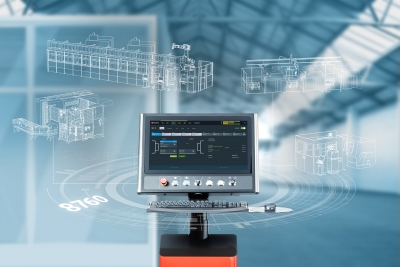
The new version of Fastems' Manufacturing Management Software (MMS) integrates both automated and non-automated processes into digital manufacturing management, bringing together three application areas in a single manufacturing software platform: pallet-based automation, automation of direct part handling with robots and work cell operations for standalone machines and other manual manufacturing operations.
Topi Judén, head of product management - digital products for Fastems said, “With the new version of MMS we are proud to introduce the new level of control for direct part handling automation. Also, we are offering an easy way of scheduling the work queues and resource needs for non-automated production phases and thus extending the full transparency, control and visibility to all manufacturing operations.”
The story of MMS as a pallet automation cell controller continues with an extensive set of features developed for the direct part handling solutions. Now the MMS software platform offers the advanced production management functionality for robotized machine tending applications. Easy introduction of new workpieces is important for achieving today’s manufacturing requirements. For this the new MMS platform includes functionalities for part process plan definitions through the graphical user interface. Together with parametric robot programs and coordinate based part location management the need of robot programming is minimized, and the PLC programming can be avoided totally.
The new MMS version also delivers the predictive and adaptive scheduling for the automated production by industrial robots. This is the base for the entire production planning, plus MMS adds the manufacturing resource planning with the indication of missing resources such as cutting tools, raw materials, NC programs, and the like. This gives the full “look-ahead” view for operators to execute the planned production to enable proactive operation, leading to greater output. The new MMS manages the order-based production in the robot cell with manufacturing batches. Flexibility is brought in by having the possibility to produce several different workpieces simultaneously in different lot sizes.
Also, the information about the required fixturing and clamping elements on the machine tool are now available, and the new MMS manages these as setups. It can schedule the setup changes for the machine tools and, depending on the application, is even capable of changing the setup automatically with the robot.
Further, with the latest MMS version, it’s possible to plan and control the aspects of manufacturing that are not automated with robots or FM-systems. As a result, the MMS software closes the gap between the automated and manual manufacturing processes. For example, the operator of a standalone machine tool receives a precise work list and instructions via the MMS about which steps are required for production and receives timely information, such as when a set-up, materials and tools must be ready.
The new MMS combines three previously separate manufacturing facets in a single software package that links all relevant processes. The manufacturing processes in the individual areas can be planned, forecasted, controlled and monitored separately or in combination as required. This allows the full transparency of manufacturing operations by providing a detailed overview of the entire production process. MMS users will therefore not only find it easier to plan the production and the resources required for it as a package, but also to control it more effectively and adapt flexibly to future orders.
Contact Details
Related Glossary Terms
- numerical control ( NC)
numerical control ( NC)
Any controlled equipment that allows an operator to program its movement by entering a series of coded numbers and symbols. See CNC, computer numerical control; DNC, direct numerical control.






